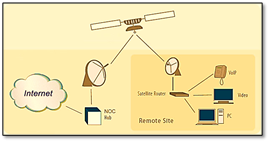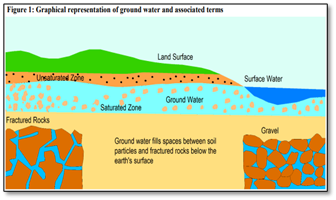Monday, 3rd May 2021
This day in History- World Press Freedom Day.

Every year May 3rd is observed as World Press Freedom Day. This day was proclaimed by the UN General Assembly in December 1993, following the recommendation of UNESCO's General Conference. Since then, 3 May, the anniversary of the Declaration of Windhoek is celebrated worldwide as World Press Freedom Day. This year’s World Press Freedom Day theme “Information as a Public Good” serves as a call to affirm the importance of cherishing information as a public good.
Supreme Court issues notice to Centre on plea challenging sedition law
In News
The Supreme Court Friday issued notice to the Centre on a plea challenging the Constitutional validity of Section 124-A of the IPC that penalises sedition.
About the Petition challenging Sedition
- Sedition charges imposed for questioning the state: The petitioners have mentioned that they were charged with sedition for questioning the state governments and the Centre, and for comments and cartoons shared on social media platforms.
- Infringement on Fundamental Rights: The petitioners contended that the provision infringes upon the fundamental right of freedom of speech and expression, guaranteed under Article 19(1)(a) of the Constitution.
- Frequent misuse and vagueness: The petition has challenged the frequent misuse and misapplication of the law since 1962 and the vagueness in the law also has an impact on the democratic freedoms of individuals.
|
Sedition Law: Section 124 A of IPC It defines sedition as an offence committed when "any person by words, either spoken or written, or by signs, or by visible representation, or otherwise, brings or attempts to bring into hatred or contempt, or excites or attempts to excite disaffection towards the government established by law in India". Disaffection includes disloyalty and all feelings of enmity. However, comments without exciting or attempting to excite hatred, contempt or disaffection, will not constitute an offence under this section. Punishment for the Offence of Sedition: Sedition is a non-bailable offence. Punishment under the Section 124A ranges from imprisonment up to three years to a life term, to which fine may be added. |
Stand of the Supreme Court on Sedition Law
- Narrowing down the interpretation of Sedition: In several cases like the Kedarnath vs State of Bihar the Supreme Court differentiated between disloyalty to the country’s government and merely expressing views on the government without inciting public disorder through acts of violence. The Supreme Court imposed a narrower scope of interpretation, holding only those matters that had the intention or tendency to incite public disorder or violence as legally seditious.
- Essential ingredients of Sedition: Various verdicts in Romesh Thappar case, Kedar Nath Singh case, Kanahiya Kumar case re-defined a seditious act only if it had essential ingredients of disruption of public order; attempt to violently overthrow a lawful government and threatening the security of State or of public.
- Defence of freedom of speech and expression: The judicial pronouncements in cases like AK Gopalan and Shreya Singal exempted political dissent, peaceful protest and expression of frustration over state affairs as not amounting to sedition.
Source
Shifting of Earth’s Axis due to climate change
In News
New research has claimed that climate change is causing marked shifts in the axis along which the Earth rotates.
About the Study
- As per the study, the North pole has shifted in a new eastward direction since the 1990s, because of changes in the hydrosphere (meaning the way in which water is stored on Earth).
- From 1995 to 2020, the average speed of drift was 17 times faster than from 1981 to 1995. Also, in the last four decades, the poles moved by about 4 metres in distance.
- This is due to the significant melting of glaciers because of global temperature rise.
- Sometimes, changes in the distribution of molten rock in Earth's outer core can alter how the planet's mass is distributed. The way water is distributed on Earth's surface also plays a big role.
- So if water that was frozen in glaciers in the planet's polar regions melts and joins the ocean, the weight of that water gets spread across a different area.
- The calculations were based on satellite data from NASA’s Gravity Recovery and Climate Experiment (GRACE) mission as well as estimates of glacier loss and groundwater pumping going back to the 1980s.
- The other possible causes are (terrestrial water storage) change in non‐glacial regions due to climate change and unsustainable consumption of groundwater for irrigation and other anthropogenic activities

How does Earth’s Axis shift?
- The Earth’s axis of rotation is the line along which it spins around itself as it revolves around the Sun. The points on which the axis intersects the planet’s surface are the geographical north and south poles.
- The location of the poles is not fixed, however, as the axis moves due to changes in how the Earth’s mass is distributed around the planet. Thus, the poles move when the axis moves, and the movement is called “polar motion”.
- According to NASA, data from the 20th century shows that the spin axis drifted about 10 centimetres per year. Meaning over a century, polar motion exceeds 10 metres.
- Generally, polar motion is caused by changes in the hydrosphere, atmosphere, oceans, or solid Earth. But now, climate change is adding to the degree with which the poles wander.
What will be the impact of the axis shifting?
- Earth’s axis is tilted at an angle of 23.5 degrees. So the northern and southern hemispheres get varying amounts of sunlight at different times of the year, which is why we have seasons.
- The recent change to Earth's axis won't affect our everyday lives, but it could slightly tweak the length of our days.
R&D at Raman Research Institute (RRI)
In News
Researchers from the Raman Research Institute (RRI), Bengaluru, an autonomous institution of the Department of Science and Technology have resolved the mystery of the antimatter counterpart of the electrons called Positron and Positron Excess Phenomenon.
A brief understanding of Anti-Matter, Positron and Positron Excess
- Matter is made up of atoms (units made of Protons, Neutrons and Electrons), which are the basic units of chemical elements such as hydrogen, helium or oxygen whereas Antimatter is the opposite of normal mattere the sub-atomic particles of antimatter have properties opposite to those of normal matter.
- Positron is a subatomic particle whose mass is the same as that of an electron and numerically equal, but it is a positively charged particle. It is the antimatter counterpart of the electrons.
- Over the years astronomers have observed positrons having an energy of more than 10 giga-electron volts, or 10 GeV which is the energy of a positively charged electron accelerated across a 10,000,000,000-volt battery.Positrons with energy more than 300 GeV, however, are lower in comparison to what astronomers expect.
- This behavior of positrons between 10 and 300 GeV is what astronomers call the ‘positron excess’.
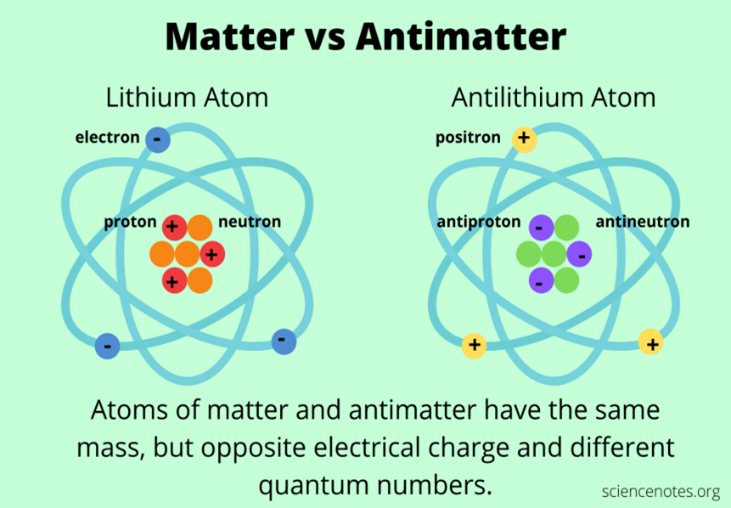
Raman Research Institute’s Study
- The Milky Way consists of giant clouds of molecular hydrogen which are the seats of the formation of new starsand can be as massive as 10 million times the Sun’s mass.
- Cosmic rays produced in supernova explosions propagate through these clouds before they reach the Earth. Here, they interact with molecular hydrogen and can give rise to other cosmic rays.
- As they propagate through these clouds, theydecay from their original forms and intermix, lose their energy by energizing the clouds, and may also get re-energized.
- RRI studied all these astrophysical processes and followed a comprehensive catalogue which consists of ten molecular clouds in the immediate neighborhood of our Sun whichprovides the astronomers a crucial input that is the number of giga-electron volt cosmic rays. This would help them determine the excess number of positrons that reach the Earth.
RRIs Findings
- Cosmic rayswhile propagating through the Milky Way galaxy interact with matter producing other cosmic rays, primarily electrons and positrons. These new cosmic rays are the origin of the ‘positron excess’ phenomenon.
- All mechanisms via which cosmic rays interact with the molecular clouds show that nearby molecular clouds can be a viable contributor to the positron excess phenomenon.
Primary source: https://pib.gov.in/PressReleaseIframePage.aspx?PRID=1715111
Image of the Day- ‘Amara’ mustard and ‘Extra Dwarf’ pak choi.
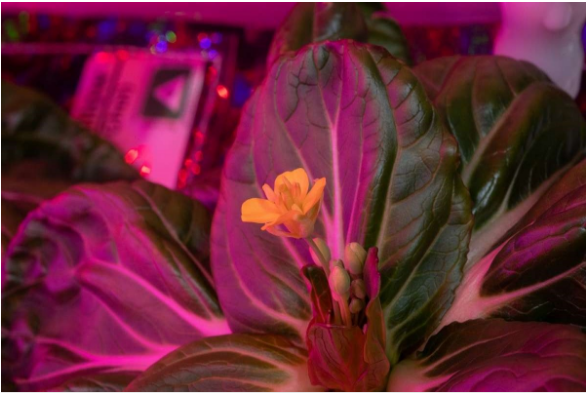
NASA astronaut has successfully harvested 2 plants in space. NASA’s Expedition 64 crewmember Michael Hopkins has harvested two crops in space — ‘Amara’ mustard and ‘Extra Dwarf’ pak choi. They were grown for 64 days, the longest leafy greens have grown on the station. The pak choi grew for so long that it began to flower as part of its reproduction cycle. The astronaut used a small paintbrush to pollinate plant flowers.
State of World Population Report 2021
In News
The State of World Population Report 2021 titled ‘My Body is My Own’ was released by the United Nations Population Fund’s (UNFPA). The report focuses on bodily autonomy.
What is bodily autonomy?
- Bodily autonomy means that individuals have the power and agency to make choices over their bodies and futures, without violence or coercion.
- This includes when, whether or with whom to have sex.
- It also includes when, whether or with whom a female wants to become pregnant.
- It also means the freedom to go to a doctor whenever needed.
- Intertwined with bodily autonomy is the right to bodily integrity, where people can live free from physical acts to which they do not consent.
- Bodily Autonomy can be violated in various forms as listed in the infographic.
- The lack of bodily autonomy has massive implications beyond the profound harms to individual women and girls: potentially depressing economic productivity, undercutting skills, and resulting in extra costs to health care and judicial systems.
How do we measure bodily autonomy?
To measure bodily autonomy, international community has agreed to monitor two indicators under the Target 5.6: Universal access to reproductive rights and health of SDG- 5 (Gender equality)—
- Reproductive Health Decision-Making Power (SDG Indicator 5.6.1): Only women who make their own decisions in all three of the following areas are considered to have autonomy-
- Who usually makes decisions about health care for women?
- Who usually makes the decision on whether or not women should use contraception?
- Can women say no to their husband or partner if they do not want to have sexual intercourse?
- Laws that empower women: SDG Indicator 5.6.2 looks at laws and regulations that guarantee full and equal access to women and men to sexual and reproductive health care, information and education.
- It covers Maternity care, contraception and Family Planning, Comprehensive Sexuality Education and Information, and Sexual Health and well-being.
- This indicator measures whether a supportive law exists and whether there are restrictions, such as age limitations or spousal permission requirements.
Key findings of the Report
For the first time, a United Nations report focuses on bodily autonomy. Through this report, UNFPA is measuring both women’s power to make their own decisions about their bodies and the extent to which countries’ laws support or interfere with a woman’s right to make these decisions.
The report shows that in countries where data is available:
- Only 55% of women are fully empowered to make choices over health care, contraception and the ability to say yes or no to sex.
- Only 71% of countries guarantee access to overall maternity care.
- Only 75% of countries legally ensure full, equal access to contraception.
- Only about 80% of countries have laws supporting sexual health and well-being.
- Only about 56% of countries have laws and policies supporting comprehensive sexuality education.
|
State of Women’s Bodily Autonomy in India · According to NFHS-4 (2015-2016), o Only about 12% of currently married women (15-49 years of age) independently make decisions about their own healthcare, while 63% decide in consultation with their spouse. o For a quarter of women (23%), it is the spouse that mainly takes decisions about healthcare. o Regarding the power to decide about use of contraception, only 8% of currently married women (15-49 years) do it independently, while 83% decide jointly with their spouse. o For nearly 1 in 10 women, husband largely takes decisions about the use of contraception. · Violence: The UNFPA report mentions that about 8,000 dowry deaths are recorded each year in India. · Laws and Schemes: The Maternity Benefits Act, Janani Suraksha Yojana, The Medical Termination of Pregnancy (Amendment) Act, POCSO Act and The Sexual Harassment of Women at Workplace (Prevention, Prohibition, and Redressal) Act etc. seek to empower the women’s choices and access to healthcare, information etc. |
Solution
Through the new international Action Coalition on Bodily Autonomy and Sexual and Reproductive Health and Rights, UNFPA is championing access to contraception and comprehensive sexuality education and promoting measures that will empower women and adolescents to make autonomous decisions about their own bodies.
For further realisation of bodily autonomy, following key areas need to be addressed -
- Education: Women with more education (including Comprehensive sexuality education and reproductive health and rights) are more likely to make their own decisions about contraception and health care, and to be able to say no to sex.
- Health Providers: Patients must be aware of their rights, and they must be asked for informed consent. Medical guidelines, trainings on legal requirements, and specific gender-sensitivity trainings can help health-care providers actively support the bodily autonomy of patients.
- Social Norms: Social norms must also become more gender equitable. Improving women’s opportunities for livelihoods and leadership roles in their community and beyond can increase their power to make decisions within households and about their bodies.
- Laws: They must be aligned with globally agreed human rights principles and commitments and reviewed for gender responsiveness. The judiciary and police must also be aware of these laws and principles.
- Seeing the linkages between different forms of bodily autonomy can animate activists—from those working in disability rights, LGBT rights and the rights of indigenous communities, for example—to work together towards a unified vision of respect, dignity and self-determination.
Conclusion
Women around the world are denied the fundamental right of bodily autonomy with the COVID-19 pandemic further exacerbating this situation due to a sharp increase in sexual violence, barriers to health care, unplanned pregnancies as a result of lockdown and loss of jobs and breakdown of education system. Realizing bodily autonomy is essential to achieving UNFPA’s goals of ending the global unmet need for contraception, preventable maternal deaths, gender-based violence and harmful practices by 2030.
Model Q: Bodily autonomy is a foundation upon which all other human rights are built and now is the time to recognize and realize autonomy for all. Elucidate with context to India.
Primary
https://www.unfpa.org/sowp-2021/realize
https://www.unfpa.org/sites/default/files/pub-pdf/SoWP2021_Report_-_EN_web.3.21_0.pdf
https://india.unfpa.org/en/news/unfpa-launches-state-world-population-report-2021-my-body-my-own
Secondary
https://www.thehindu.com/news/national/unfpas-population-report-launched/article34329822.ece
https://www.devex.com/news/interactive-what-is-the-state-of-the-world-population-99657
https://news.un.org/en/story/2021/04/1089702
https://www.epw.in/engage/article/quest-womens-right-bodily-integrity-judicial-inroads
Network for Greening the Financial System (NGFS)
- Context: The Reserve Bank of India has joined the Network of Central Banks and Supervisors for Greening the Financial System (NGFS) as a member.
- The NGFS is a group of Central banks and supervisors established at the Paris “One Planet Summit” in December 2017 to help strengthen the global response required to meet the goals of the Paris agreement.
- It aims to enhance the role of the financial system to manage risks and to mobilize capital for green and low-carbon investments in the broader context of environmentally sustainable development.
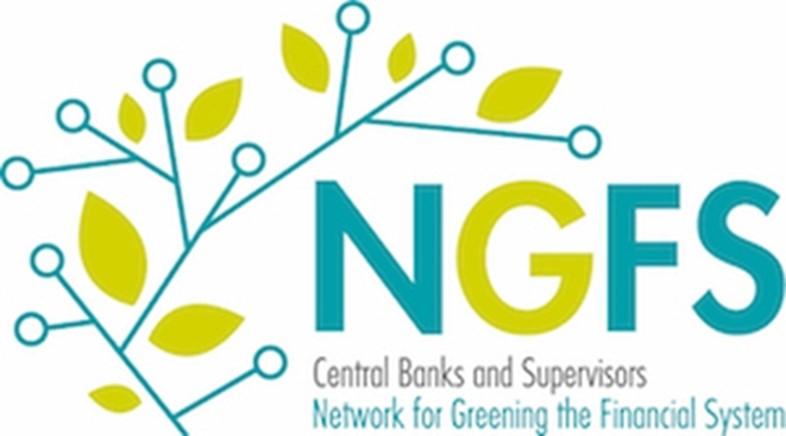
Primary source: https://www.ngfs.net/en/about-us/governance/origin-and-purpose
Vande Bharat Mission (VBM)
- Context: TheVande Bharat Mission (VBM) has become one of the largest civilian evacuation missions by a country.
- It initiated as the evacuation exercise to bring back Indian citizens stranded abroad amidst the coronavirus induced travel restrictions.
- The mission is currently undergoing its 10th phaseand has carried 32 lakh passengers approximately both inbound and outbound.
- Besides helping distressed rural farmers and the NRIs, the aim of the mission is to keep the supply chain
- The government has entered into special travel arrangements called ‘air travel bubbles’with several countries (It is a temporary arrangement between two countries to restart commercial passenger services when regular international flights are suspended because of the pandemic).

Primary source: https://www.thehindu.com/news/national/vande-bharat-becomes-one-of-top-civilian-evacuations/article34361996.ece
Guru Tegh Bahadur - Edukemy Current Affairs
- Context: 400th birth anniversary of the ninth Sikh guru, Guru Tegh Bahadur.
- Born in 1621 in Amritsar, Punjab, he was the ninth Sikh Guru and the father of the tenth Guru, Gobind Singh.
- Known as a great teacher, he was an excellent warrior, thinker, and poet who wrote on spiritual aspects. His writings are housed in the sacred text‘Guru Granth Sahib’
- He played a key role in setting up preaching centersthroughout the Indian subcontinent.
- He received martyrdom for protecting and upholding human values.

Primary source: https://www.britannica.com/biography/Tegh-Bahadur
Addressing climate risks for climate finance takes centrestage – Down To Earth
Essence - The Reserve Bank of India (RBI) has just joined the Network for Greening the Financial System. It is a voluntary group of 62 central banks which aims to help members design policies that incorporate environment and climate risk resilience in the financial sector. In this context, the article discusses the need for climate risk financing, while suggesting ways to private sector climate financing. It urges the Indian government to introduce guidelines and regulations to standardise and mandate climate-related disclosures in all financial statements and push private companies and financial institutions to manage their exposure to climate risks in their portfolios and operations.
Why you should read this article?
- Briefly Know about the climate risks in future according to the World Economic Forum’s (WEF) Global Risks Report 2021.
- Understand the current climate finance system and major lacunae in the efforts to disburse finance from developed countries.
- Learn about the need for private sector climate financing and how to leverage it and fully integrate climate-aligned structural change with economic recovery through fundamental shift in the entire finance system.
The rising sun in India-Japan relations – The Hindu
Essence - Contrary to the expectations of many, Japanese Prime Minister Yoshihide Suga has turned out to be a true successor of his predecessor, Shinzo Abe, on the foreign policy front. One can expect a continuation of the balancing security policy against China that began with Prime Minister Narendra Modi and Shinzo Abe in 2014. During a phone call with the Indian Prime Minister, Mr. Suga expressed concern over China’s “unilateral” actions in the East and South China Seas, Xinjiang and Hong Kong.
There are many signs of deepening ties like - expanded high-level ministerial and bureaucratic contacts, conducted joint military exercises, concluded military pacts such as the Acquisition and Cross-Servicing Agreement (ACSA) logistics agreement. New Delhi and Tokyo’s support for a Free and Open Indo-Pacific and continued willingness to work with the Quad, which is fast emerging as a central pillar of the security strategies of both nations. Also, putting together a digital research and innovation partnership that ran the gamut of technologies from AI and 5G to the Internet of Things and space research.
Why you should read this article?
- To know the crux of the discussions during this first in-person meeting between the US President Joe Biden, and Japanese PM Mr. Suga, and how this is also indication for alignment with India.
- It is providing information on India - Japan engagements/ties.
- To know about the challenge China poses through innovation & emerging technologies.
- To know about areas where India - Japan needs to come on same plane.
Link - https://www.thehindu.com/opinion/op-ed/the-rising-sun-in-india-japan-relations/article34453087.ece
Engineer’s Bio-Organic Fertilizers yield 20% more produce and benefits 400 Farmers
Present Situation
- There is increasing burden of cancers, issue of food toxicity triggered by a heavy dose of chemicals and pesticides in vegetables
- Around 2012-13, Dr Salim Channiwala, engineer at Sardar Vallabhai National Institute of Technology in Surat, vowed to work towards the benefit of health of the masses by ensuring no chemical substance is used in agriculture.
- For this purpose, he developed Bio-Organic Fertilizer.
Bio-Organic Fertilizers
- Dr Salim developed bio-organic liquid fertiliser made from biogas slurry, which is more effective than its chemical counterpart.
- It provides 20% more production and is 20% cheaper than chemical fertilisers
- Micronutrients were mixed with biogas slurry yielded a nutrient-rich liquid bio-organic fertiliser.
Outcomes
- Health Benefits: Workers do not complain about skin irritation unlike chemical fertilisers.
- Benefits to soil: Soil retains more moisture than that under chemical fertilisers
- Encourages the growth of Biofertilizers like Azospirilium, Azotobacter, Mycorrhiza fungi, Rhizobia, earthworms which enriches the soil
- Other benefits: Due to elimination of chemical fertilizers, agriculture run-off water is free of excessive nitrates and phosphate leading to less vulnerableto algal blooms
Where can be use this case study?
Promotion of organic fertilisers, local examples for betterment of agriculture in India, Steps taken to promote organic agriculture
Share the article
Get Latest Updates on Offers, Event dates, and free Mentorship sessions.

Get in touch with our Expert Academic Counsellors 👋
FAQs
UPSC Daily Current Affairs focuses on learning current events on a daily basis. An aspirant needs to study regular and updated information about current events, news, and relevant topics that are important for UPSC aspirants. It covers national and international affairs, government policies, socio-economic issues, science and technology advancements, and more.
UPSC Daily Current Affairs provides aspirants with a concise and comprehensive overview of the latest happenings and developments across various fields. It helps aspirants stay updated with current affairs and provides them with valuable insights and analysis, which are essential for answering questions in the UPSC examinations. It enhances their knowledge, analytical skills, and ability to connect current affairs with the UPSC syllabus.
UPSC Daily Current Affairs covers a wide range of topics, including politics, economics, science and technology, environment, social issues, governance, international relations, and more. It offers news summaries, in-depth analyses, editorials, opinion pieces, and relevant study materials. It also provides practice questions and quizzes to help aspirants test their understanding of current affairs.
Edukemy's UPSC Daily Current Affairs can be accessed through:
- UPSC Daily Current Affairs can be accessed through Current Affairs tab at the top of the Main Page of Edukemy.
- Edukemy Mobile app: The Daily Current Affairs can also be access through Edukemy Mobile App.
- Social media: Follow Edukemy’s official social media accounts or pages that provide UPSC Daily Current Affairs updates, including Facebook, Twitter, or Telegram channels.


